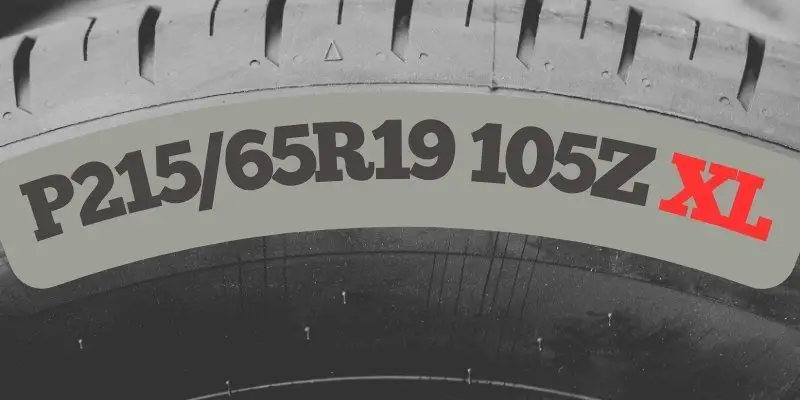What Does the XL Mean in Tire Size?

The “XL” in tire size stands for “Extra Load,” indicating that the tire can safely carry more weight than a standard tire of the same size. XL tires have reinforced construction, allowing them to handle higher inflation pressures and heavier loads.
This makes them ideal for vehicles that frequently carry heavy cargo or passengers, or for drivers who want added safety and durability.
Tire Markings
Imagine you’re looking at a row of shoes in a store. Each shoe has a size label that tells you important information about its fit. Tire markings work in a similar way, but instead of just telling you the size, they provide a wealth of information about the tire’s capabilities.
Let’s break down a typical tire marking: P225/50R17 98V XL
Here, “P” indicates it’s a passenger tire, “225” is the width in millimeters, “50” is the aspect ratio, “R” means it’s a radial tire, “17” is the wheel diameter in inches, “98” is the load index, “V” is the speed rating, and finally, we have our star of the show – “XL” for Extra Load.
What Extra Load Really Means
Think of XL tires as the heavyweight champions of the tire world. Just like how a heavyweight boxer can take more punches than a lightweight, an XL tire can handle more weight than its standard counterpart.
But how much more? Generally, an XL tire can carry about 10-15% more weight than a standard load tire of the same size. This might not sound like much, but when you’re talking about hundreds of pounds, it can make a significant difference.
When You Might Need XL Tires
Imagine you’re planning a road trip with your family. Your car is packed to the brim with luggage, camping gear, and maybe even a bike rack on the back.
In this scenario, XL tires could be your best friend. They provide that extra capacity to handle all that additional weight safely.
XL tires are also commonly used on:
- SUVs and crossovers, especially those used for towing
- Vehicles that frequently carry heavy loads
- Performance cars that need tires that can handle high speeds and cornering forces
Pros and Cons of XL Tires
Like choosing between comfort food and health food, there are trade-offs to consider with XL tires.
Pros:
- Increased load capacity
- Better stability, especially when cornering or braking
- Often more durable due to reinforced construction
Cons:
- Usually more expensive than standard tires
- May provide a slightly firmer ride
- Can potentially decrease fuel efficiency due to higher rolling resistance
How to Know if You Need XL Tires
Deciding whether you need XL tires is like choosing the right backpack for a hike. If you’re just taking a short walk, a small daypack will do. But if you’re planning a week-long trek, you’ll need something more substantial.
Check your vehicle’s manual or the placard inside the driver’s side door jamb. This will tell you the recommended tire size and load rating. If XL tires are recommended, it’s best to stick with them. However, even if they’re not required, you might consider them if:
- You frequently carry heavy loads
- You often drive with a full complement of passengers
- You’ve experienced issues with standard tires wearing out quickly
Wrapping Up
In the world of tires, XL doesn’t stand for “extra large” but “extra load.” These tires are designed to safely carry more weight than standard tires of the same size.
While they come with some trade-offs like potentially higher cost and a firmer ride, they offer increased load capacity and often better durability.
Whether you need XL tires depends on your vehicle, how you use it, and your personal preferences. By understanding what XL means, you’re better equipped to make the right choice for your vehicle and driving needs.

Meet Caitlin McCormack, a Tire Size Expert and Blogger Passionate About Everything Related to Tires. With Years of Experience in the Tire Industry, Caitlin Has Become an Expert in Tire Sizes and Their Impact on Vehicle Performance.
